Believe it or not, Final Fantasy used to be a pretty simple series. It had some weird moments, but for a while, it was about plucky heroes battling villains in a fantasy world. Things started to change during the SNES, but it wasn't until Final Fantasy 7 that we got the more cinematic and convoluted Final Fantasy titles we have today. Final Fantasy: The 4 Heroes of Light is an attempt to go back to the days before you had to memorize an encyclopedia of terms and keep track of more plot twists than a murder mystery. It's a simple, straightforward and cheerful JRPG that mixes old-fashioned design with some modern updates. It isn't a game for everyone, but that doesn't stop it from being a fun game for the intended crowd.
The 4 Heroes of Light opens in the small village of Horne. Brandt awakens on the morning of his 14th birthday, prepared to meet the king to declare himself an adult. Unfortunately, he arrives at the castle to find that the youngest daughter of the King, Arie, has been kidnapped by a witch. He and his friend Jusqua set off to rescue Arie from the witch, joined by Yunita, a female knight whose job is to protect Arie. Once the threesome finds Arie and defeats the witch, everything seems fine and dandy — until they return home and discover that everyone in Horne has turned to stone. The foursome wanders the world, looking for a way to break the curse. A mysterious crystal appears, warning them of imminent disaster and saying that only they have the power to save the world. It's a good, old-fashioned Final Fantasy plot!
The story is straightforward, almost to a fault. The four main heroes are the only characters who have much of a personality, and they're simple enough to feel right at home in an SNES-era RPG. The game seems to care about its story more than players will, though; a good portion of the early game is dedicated to the four heroes splitting up and going their own ways. This is not explained overly well in the plot, so it feels like a slightly forced way to pad out the game. The gameplay shines once your team is together again, but it doesn't feel like it should take as long as it does to get to that point. The characters and world are quite charming in an old-fashioned sort of way, much in the manner of older Final Fantasy games. For people who are used to the wordier characters of recent games, it may almost be too difficult to go back to the days of a chipper hero and kidnapped princess.
The 4 Heroes of Light is an extremely old-school style of game. It doesn't hold your hand much and expects the player to puzzle out where to go and talk to every NPC. This is probably both the best and worst part about the game. If you're the kind of player who enjoyed the older Final Fantasy games, where you had to explore and puzzle where to go next, then this will be appealing. On the other hand, if you don't like the idea of being lost because you decided to talk to an NPC during the day instead of at night, you'll probably get frustrated easy. The game is built around exploring every nook and talking to everyone. This is generally a good thing, as the NPCs in the game provide important hints about upcoming challenges, but to people who are used to the more modern Final Fantasies, which tell you where to go and what to do, it may feel a little overwhelming, especially during the sequences where your party is split up.
The 4 Heroes of Light uses a somewhat traditional turn-based Final Fantasy battle system, but with a few twists. The first twist is that there are no magic points, and every action you can take in the game is governed by Action Points. Characters can have between 1 and 5 AP and will regain 1 AP per round. Performing a normal attack takes 1 AP, and anything more complex often takes more. In order to use your best abilities, you have to balance gaining AP with spending it. The easiest way to gain an extra AP is to boost (defend), but that means you can't do anything else during that round. Certain items or abilities can grant AP to characters, and some passive abilities can lower the AP cost of skills, seriously changing how you might handle battles.
The second major change is in how attacks and spells work. Spells are not learned naturally by characters, and you must find spell books, which are held in a character's inventory. If a character has a spell book, s/he can cast that spell. Likewise, weapons are not only useful for their attack power. You'll find weapons of various elements and attributes throughout your quest, and you only have limited inventory slots, which is a rather old-school game design choice. Each party member can only hold a few items, and your total inventory is strictly limited. This means you can't carry old stuff that you don't need, especially since enemies are prone to dropping useful new gear. Each town has a storage location where you can stick items, and it helps alleviate the inventory issues somewhat. This may be frustrating for people who love to collect everything or load up the inventory with 99 potions. It works well for the game, but like most of the design decisions in The 4 Heroes of Light, it feels very old-fashioned.
Another unusual aspect is that all abilities, magic and otherwise, auto-target a specific friend or foe automatically. Depending on what you equip, you may attack the front row or back row of the enemy, or may heal the character with the lowest hit points. There is no manual targeting in the game, so your combat tactics are somewhat governed by what you equip. This sounds weird at first blush, but it ends up working surprisingly well. I never really encountered a situation where the AI would choose the wrong person. It would've occasionally been nice to target my own actions, but if you set up your character with the right gear, he or she will attack the right enemies, cast the right spells and take the actions you'd take if you were manually targeting.
It would be very easy for the game's automated features to feel frustrating or imperious, but The 4 Heroes of Light does a fairly good job of avoiding this. The automatic AI is very solid and usually does what you'd want it to. In some ways, it reminds me of Final Fantasy XIII's system, although nowhere near as guided. It makes battles a lot faster, and that is a good thing. If the combat dragged down for too long, it could turn the game's charming dungeons into a slog, so being able to speed through fights while still retaining control is a nice compromise between old-school design and new-school pacing.
One of the coolest features of The 4 Heroes of Light is the crown system. You have the ability to use crowns, which are basically magical hats, and whichever crown you're wearing determines your character's job class. The White Mage Crown means you're a White Mage, the Dancer Crown a Dancer, etc. Once you unlock a job, it is available to all four characters. Each job has a passive boost and special active abilities. For example, the White Mage job reduces the cost of casting a white magic spell by 1 AP. It also begins with the Lifegiver ability, which makes the next White Magic you cast influence all characters in the party. You can customize your party with these crowns, and there are a ridiculous number of them. There are the traditional Final Fantasy jobs like White Mage or Dark Knight, but also a bunch of new jobs as well, such as the Seamstress or Salve-Maker.
The 4 Heroes of Light offers an almost absurd amount of customization. Not only can you pick from almost 30 different classes, but you can also power up these classes for added effects. Powering up isn't as easy as beating up enemies until you gain a level. Each crown has gem slots, and certain enemies will drop gems, which can be slotted into the crown. If you fill all the slots on a crown, it will level up. The crown earns new abilities, which can drastically turn the tide of battle. Some of these abilities are simply upgrades. For example, the Wayfarer begins with Runaway, which allows you to run away from battle. Upgrading it gives you Escape, which assures you can escape the battle. Others gain brand-new abilities. The Salve-Maker, for instance, gets the power to use items on multiple characters at once. However, upgrading your crowns is something you have to think about. Each character has their own crowns, so you have to decide if you want to invest in a particular character, especially since gems can be somewhat tough to come by.
The 4 Heroes of Light has a pretty unusual difficulty curve. There are some areas that can seem surprisingly rough, but the truth is that for a majority of the game challenges, there is something nearby that is custom-built to deal with the danger. Sometimes it is obvious and sometimes it isn't, but the game usually does something to help you out. For example, an early dungeon has you facing a monster made of sand that is nearly impossible to damage and hits like a tank. If you talk to all the NPCs in the nearby town, you'll discover that he's vulnerable to water magic. Coincidentally, there's water magic located in the town, and the local store sells Rock Shields, which dramatically weaken his attack power. Not every solution is as simple, but the game seems generally geared to assume you're talking to everyone and looking in every corner. As the game progresses, things become a lot easier if you exploit the various crowns available to you. It's a weirdly paced game in that it can either be very easy or weirdly difficult, depending on a few minor differences. The stat numbers are exceptionally low, so even a few points of difference in armor or weapons can be the difference between being crushed and being invincible.
The 4 Heroes of Light uses a storybook art style that may be too ambitious for the DS. The character models are absolutely adorable, and they emote very well for their simplicity. The real stars of the show are the many crowns, most of which are cute in their own ways. My personal favorite is the Dancer, which gives everyone a flamboyant rose and stylish outfit to wear. However, the world looks odd, and the attempts at storybook coloring don't always work. When it works, it gives the game a very distinct visual style, but when it doesn't, it just looks odd. It works often enough that it doesn't distract from the fun of your crown changes, but not often enough that it really feels like the best visual style for the game. The soundtrack is good, but not great. It is nowhere as memorable as most of the other Final Fantasy titles, and while there are some interesting things done with the tempo of songs during hectic battles, I can't say that I found any of them to be very memorable.
Final Fantasy: The 4 Heroes of Light is a lovingly old-school kind of Final Fantasy game. Gone are many of the modern flourishes in favor of old-school style and charm. This is both a plus and a minus, as that old-school style and charm aren't going to appeal to everyone. For those who have fond memories of the days before Cloud Strife and Sephiroth, there's a lot of nostalgia packed into this little cart. For those without, it may seem oddly simple and archaic compared to the bright-and-flashy antics of Lightning or Tidus. It reminded me a lot more of a Dragon Quest title than any game bearing the Final Fantasy name. Despite all this, it's still a good game. It may be old-fashioned, but it does a lot of things right. The battle system is fast and engrossing, the character customization is in-depth, and the world you explore is full of fun things to find. It has its problems, but fans of old-fashioned JRPGs will find a lot to like in The 4 Heroes of Light.
Score: 8.0/10
More articles about Final Fantasy: The 4 Heroes Of Light


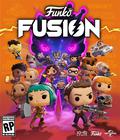


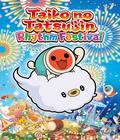
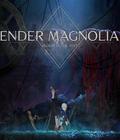
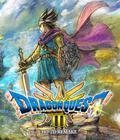



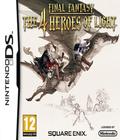 Final Fantasy: The 4 Heroes Of Light, previously known as Four Warriors of Light: Final Fantasy Gaiden, boasts beautiful picture book visuals and an easy to control battle system. The game goes back to the basics and origins of the franchise, with a classic story of four young heroes embarking on an unforgettable adventure -- a tale of dragons, kings, princesses and witches.
Final Fantasy: The 4 Heroes Of Light, previously known as Four Warriors of Light: Final Fantasy Gaiden, boasts beautiful picture book visuals and an easy to control battle system. The game goes back to the basics and origins of the franchise, with a classic story of four young heroes embarking on an unforgettable adventure -- a tale of dragons, kings, princesses and witches.







































